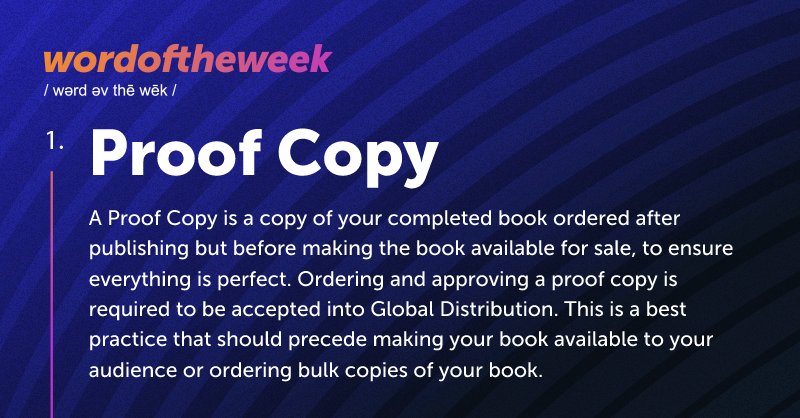Before You Publish: Get a Proof Copy
Your book is done. You’ve worn out your keyboard typing, spent countless hours revising, gone through the tedium of editing, and made your way through the publishing process. All that’s left is to list the book for sale and watch the money roll in, right?
Well no, of course not. If you publish your book and jump right into promoting it, you’re skipping one of the most important steps: the final proof copy.
What Is a Proof Copy of a Book?
Your proof copy (sometimes called a page proof) is the final version of your book, the product you intend to sell, for you to review. That’s it.
This proof copy is your last chance to look for typos, check the typesetting and layout, and see how the cover will look in print.
It is absolutely crucial that you buy a proof copy before you sell your book. Mostly to be certain the book meets your expectations, but also to experience your book in the same way your readers will. This doesn’t get talked about enough, but you can’t hope to market your book (or any product) if you don’t know exactly what your buyers will receive.
Proof Copy vs. Galley Copy vs. Arc
Don’t get your proof copy confused with a galley copy or advance reader/reading/review copy. Each represents a unique copy of your book. While publishing and marketing your new book, you’ll need to get your hands on all three.
It’s important to note that galley and advance reader copies are typical in the traditional publishing world, but not a given for self-publishing. Why? The simple answer is money. When you self-publish, you’ll be purchasing those early copies and be responsible for securing readers and reviewers to read the advance copies. Take that into account when you’re planning your publishing budget.
Galley Copy
Your galley copy is one of the preliminary versions of your book. It’s an editing edition printed coil bound with extra large margins.
The galley copy will go out to your editor and proofreader. You might also send a few copies to beta readers or book reviewers. You might see ‘uncorrected proof’ on the cover or the page header.

Advance Reader Copy
Your advance reader copy (ARC) comes a little later. Usually, you’ll print off some ARCs three to six months before your publication date. Unlike galley proofs, the ARC is a nearly completed version of your book.
ARCs are books you’ll give away freely to book bloggers, reviewers, and any readers of influence in your network. Sharing early copies of your book is a great way to tease your upcoming launch, build some buzz in your field, and get some reviews and cover blurbs from influencers and experts in your industry.

Proof Copy
The last book you’ll order before you release your book is the proof. Your proof copy is essentially a reader edition; it’s the first printed copy of the book you’ll sell. Use it to do a final book review and catch any typos or formatting errors.

Don’t Skip the Proof Copy
I don’t want to hark on this point. But I’m going to. Don’t skip buying a proof copy!
Successful book publishers, from the big five to the smallest indie press, ALL take the time to review books before releasing them. You will—almost always—find some minor edit while reviewing your proof. Even if you misspelled filipendulous and no one but your high school English teacher would notice, you can correct it.
How to Get Proof Copies of Books
When you’re publishing your book on Lulu, you’ll want to follow all the steps for the retail channel(s) you’ll be using.

Continue following the steps to set up your metadata, upload your files, and determine retail pricing. On the REVIEW step, you’ll confirm everything and publish. Hooray!
And now is when you make your newly published book Private Access, so only you can buy a copy.

Order a copy and get to proofing!
Note: If you use our Global Distribution service, you must order a proof copy.
Reading Your Proof Copy
Look for a few important things while reading your proof copy. Typos and grammar errors are a must, but also pay attention to line spacing, margins, and orphaned lines/words. If you indent the first line of paragraphs, verify they are all properly indented.
Pay attention to page layout. Printed books display the odd pages on the right and even pages on the left.
Save yourself the frustration of finding out on social media that you’ve got:
- Typos
- Layout errors
- Missing or incorrect page numbers
- Blank pages
- Text in the gutter
- Blurry images
If you find any errors, upload a corrected file and republish it.
You worked hard to write this book. Make sure you’re delivering the best possible version of it to your audience! You’ll be glad you took the time and effort to get the design details just right.




